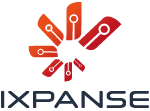What is Hybrid Cloud? What are the Management Strategies?
The enterprise IT world is no longer confined to a single environment. Companies keep part of their workloads in their own data centers (On-Premises) while leveraging the flexibility and scalability offered by public cloud providers (AWS, Azure, GCP) for others. The combination of these two worlds is called Hybrid Cloud.
While hybrid cloud brings many advantages such as flexibility, cost optimization, and regulatory compliance, it also introduces significant management challenges. Unifying multiple infrastructures, diverse toolsets, and APIs under a single, coherent operational model requires a deliberate strategy.
In this article, we examine the fundamental challenges of building a successful Hybrid Cloud strategy and the steps you should take.
Challenges of Hybrid Cloud Management
By nature, hybrid environments are complex. This complexity can cause management to break down across four key areas:
Operational Inconsistency (Silo Management)
Each environment (on-premises, public cloud A, public cloud B) is often managed by different tools and teams. This creates operational silos:
- Different Tools: Separate consoles for virtualization platforms, cloud control panels, monitoring systems, and firewalls. For example, using on-prem VMware vCenter alongside the Azure Portal forces administrators to context-switch, leading to inefficiency.
- Different Processes: Inconsistent processes and automation levels between provisioning a virtual machine (VM) on-prem and spinning up a container in the cloud. This inconsistency increases Time-to-Market for new applications.
- Skills Gap: Teams may not simultaneously master traditional IT (network/storage architecture) and modern cloud technologies (serverless, PaaS). This raises hiring costs and mandates continuous training.
Network and Latency Management
Hybrid cloud requires workloads to communicate continuously between data centers and clouds, complicating network operations:
- Connectivity Issues: Deployment and maintenance of secure, high-speed private links (AWS Direct Connect, Azure ExpressRoute). Right-sizing bandwidth and ensuring redundancy are vital for high availability.
- Data Egress Costs: Moving data from cloud to on-prem is often expensive. Unplanned transfers—especially in large-scale analytics or disaster recovery—can blow budgets. Therefore, application architectures that minimize data movement are essential.
- Latency: When an application runs in one environment but the database in another, latency harms user experience. Running data-intensive apps as close to the data source as possible is key to managing this risk.
Security and Compliance Gaps
Security and regulatory compliance are high-risk areas in hybrid cloud and require centralized governance.
- Shared Responsibility Model: Each provider defines a different “shared responsibility” split. On-prem security is 100% the organization’s duty, while in the cloud the organization remains responsible for OS, applications, configuration, and data depending on PaaS/IaaS usage. Training and documentation that clarify these boundaries are critical.
- Identity and Access Management (IAM): Separate identity stores across environments complicate access control and create “permission sprawl.” A centralized SSO-based IAM is essential to enforce the least privilege principle consistently.
- Configuration Drift: Updating policies in one environment (on-prem) but not another (cloud) opens security holes. A single misconfigured firewall rule in one cloud can cause a major breach.
Successful Hybrid Cloud Management Strategies
Effective hybrid cloud management rests on three pillars: technology, process, and people.
Technology Strategy: The Unified Control Plane
It is vital to use platforms that allow managing different environments through a single interface. The goal is to abstract where the infrastructure runs.
- Containers and Kubernetes: The key to application portability. Orchestrators like Kubernetes (e.g., Red Hat OpenShift, Azure Arc, Google Anthos) let you deploy and operate applications consistently—whether on-prem, private cloud, or public cloud—greatly reducing operational complexity.
- Infrastructure as Code (IaC): Automate infrastructure deployments with tools like Terraform, Ansible, or Pulumi. This not only prevents configuration drift, but also enables versioning, testing, and rollbacks like a software product. A single declarative language to span multiple clouds improves efficiency.
- Centralized Monitoring and Observability: Use a single platform (e.g., Prometheus, Grafana, ELK Stack, Datadog) for all environments. Consolidating logs, metrics, and traces simplifies correlation for security and operations and enables faster root cause analysis (RCA).
Finance and Cost Strategy: FinOps
To use resources efficiently and control spend, adopt a FinOps culture—an ongoing collaboration among IT, finance, and business teams.
- Visibility and Allocation: Track cloud costs in real time and allocate them to the correct business units or projects. Detailed tagging clarifies which resource belongs to which cost center, revealing waste.
- Savings Mechanisms: Proactively leverage Reserved Instances and Committed Use Discounts from cloud providers—while right-sizing reservations to avoid underutilization losses.
- Auto-Shutdown Policies: Apply automated shutdown for dev/test/staging. Avoid paying for idle resources and keep environments active only when needed—saving up to 50% in some cases.
Organization and Talent Strategy
Regardless of technology, you need capable teams to run hybrid operations. Even the best tools fail in a poorly structured organization.
- Cloud Center of Excellence (CCoE): Form a cross-functional core team (Network, Security, Apps, Finance). This team defines standards, tools, and best practices so business units consume cloud consistently.
- Cross-Training: Upskill traditional IT teams in cloud engineering, containerization, and automation. Bridging the “cloud-native vs. traditional ops” gap is the most cost-effective way to grow in-house capabilities.
- Automation First: Make automation fundamental to reduce manual work—lowering human error and accelerating delivery. For example, automatically isolating resources after a security incident within seconds can dramatically limit impact.
Hybrid Control for Cybersecurity and Compliance
In hybrid cloud, security must be consistent at every layer and in every environment—not focused on a single point.
Centralized Security Posture Management
- Identity Integrity: Seamless synchronization between on-prem Active Directory and cloud IAM (AWS IAM, Azure AD), with mandatory MFA across all environments—your strongest defense against credential-based attacks.
- Cloud Security Posture Management (CSPM): Continuously scan and remediate misconfigurations (e.g., public storage buckets, overly permissive security groups) to eliminate common attacker entry points.
- Microsegmentation: Enforce application-level network controls to contain lateral movement if an app is compromised—especially critical to protect communication between legacy on-prem systems and new cloud services.
Data Compliance and Residency Strategy
- Data Residency: Define exactly where sensitive, regulated data (GDPR, KVKK) will reside—often on-prem or within in-country cloud regions—to reduce legal risk.
- Encryption: Protect data in transit (TLS/VPN) and at rest (AES-256). Manage keys centrally (KMS), especially when handling access and key portability across multiple clouds.
- Audit Trail: Store logs of all critical actions in secure, immutable storage that meets legal requirements—establishing a reliable chain of custody for forensics and audits.
Hybrid cloud is not a simple IT choice; it is a necessary evolution for enterprise flexibility and innovation. Successful hybrid management requires not just integrating technologies, but standardizing processes and empowering teams with cross-functional skills.
By building a unified control plane, a strong FinOps culture, and a centralized security posture, organizations can master hybrid complexity and maximize outcomes on their digital transformation journey.




